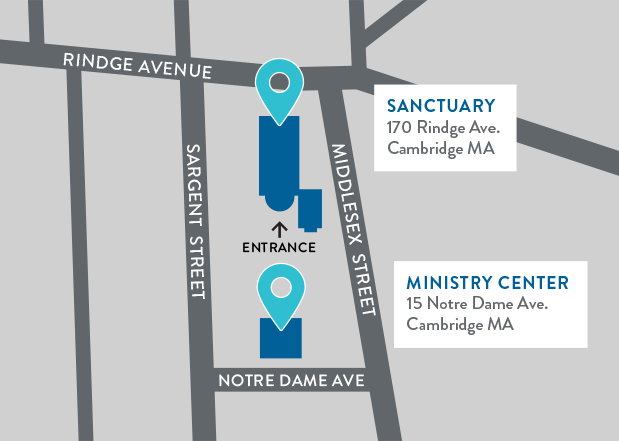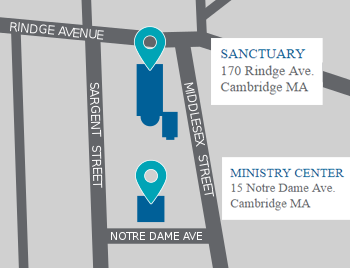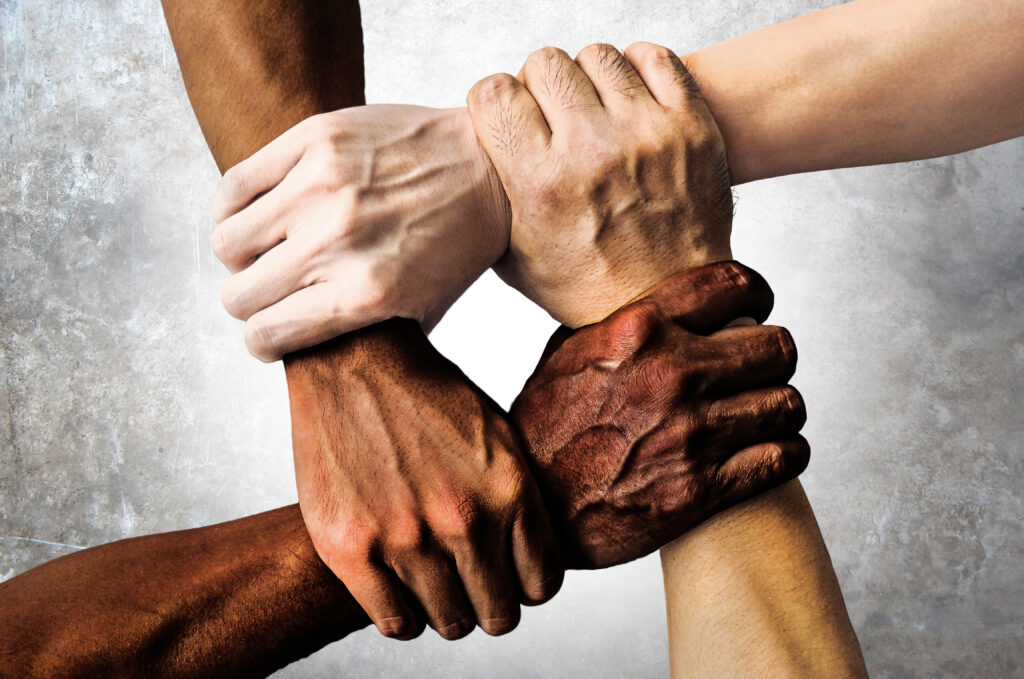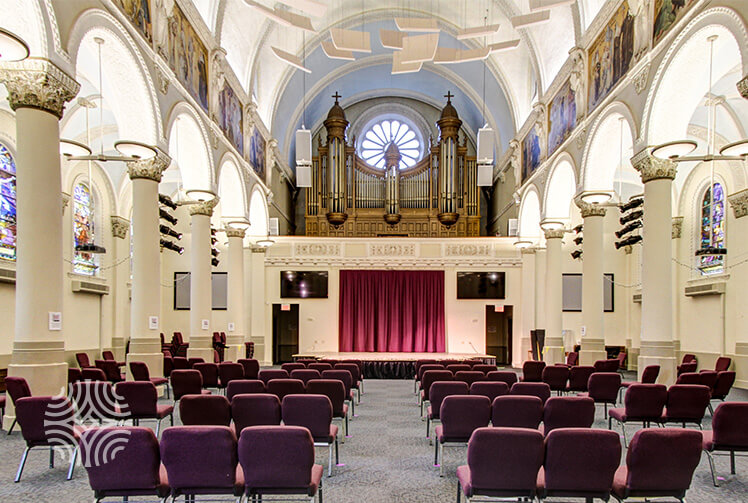Written by: Dan Archibold and Aubrie Hills
Pre-K Kids Church
Our Godly Play program for babies through kindergarteners is designed to welcome children into a beautiful and inviting space that is just for them. There is nothing on the shelves or in the space that is “off-limits” to them. When they enter their classroom community, they are greeted by the volunteers who know them by name and ask them curiously if they are “ready” to enter. This readiness is an invitation to check in with their little bodies and minds and get prepared to be with friends, listen to and wonder with a story, and work and play together.
One of the central aspects of the storytelling circle includes laying out tangible, tactile play materials on the ground, right at the eye level of the children. As they surround the storyteller, they hear language that naturally invites them to find the parts of the story that they are curious about or take favor to. They are never instructed, but offered lots of wondering questions, followed by an opportunity to play with the materials themselves. Sometimes, this looks like moving little figures through the desert bag as the people of God wander through this dangerous place, pretending together.
The rest of the room is set up with story shelves, open art materials shelves, and some other invitations to work with puzzles or blocks. The children can access any of the materials they would like and respond to the story of the day, or create their own work.
Another area of the room invites them to rest, listen to calming nature sounds or music, reflect on scripture or art, and quiet their bodies with sensory tools.
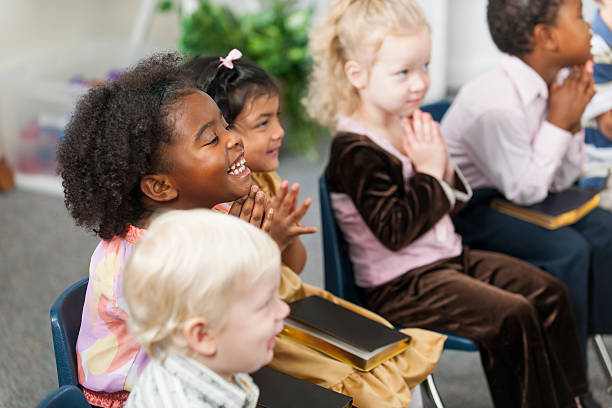
Elementary Kids Church
Most Sundays at Reservoir Church you can find the elementary-aged kids downstairs in the Multi-Purpose Room taking part in what we call Kids Church. I’m glad that we call it that instead of Sunday School. While I do love teaching—my training is in Elementary Education, not ministry—it’s not what’s most important when it comes to helping kids make a connection with God and with the church community. A while ago we came up with a tagline for our Kids Church program that I really love: “Worship. Wonder. Play. Find yourself in God’s story.” And that’s what we do!
Worship
We worship together every Sunday that we meet. In our context, that means that the first half of our large group time includes some songs or movements to give kids space to connect with God, and some time where we pray together. For anyone who wants to, that is! I don’t think there’s ever been a Sunday where all the kids were standing up, never mind singing. But enough always sing to make a beautiful noise together! And some weeks when I invite kids to pray or lift something up for us to pray for together, there aren’t any takers. Other weeks, though, we get to hear from enough of the kids that I start to worry we won’t ever be able to get to our story of the day!
Wonder
The central focus of our program is stories, and almost every Sunday, our morning is based around a Bible story. So I was surprised several years ago when a parent let me know that he was interested in finding a more “Bible-based” kids program for his family. On reflection, though, I think I know what he meant. Because we don’t do a lot of “teaching” about the Bible. No memorizing verses or the order of the books, and no moral lessons that we expect all the kids to absorb. Instead, we present—every week—a story from the Bible as it is, and invite the kids to wonder what it means to them at that moment. And we share our thoughts and questions in small groups. Sometimes kids don’t want to share, and that’s okay; but when I’m leading the discussion, before I let them off the hook, I sometimes remind them that I love hearing their thoughts because we’re all working to discover new, living meaning in the story for that particular moment.
The kids who do want to share say some pretty interesting stuff! I feel like every week they make connections between stories that I wouldn’t have made, bring a more literal take to the story, or a more abstract one. Sometimes they take the discussion in a completely different direction that lets us reflect on what we’re even doing in this church space together.
Earlier this year we were talking about the man and woman in the Garden of Eden who ate that fruit they weren’t supposed to eat, and a fifth-grader asked, “Isn’t this story just an excuse to say bad things about women?” Yes, historically it definitely has been that! But we can talk about what else the story might mean, and about what we can do today to react to those historical bad takes. We’ve grappled with awesome questions from “Was Jesus being mean in that story?” to “Why aren’t there dinosaurs in the Bible’s account of Creation?” And through it all, we each have the chance to understand a little more about what God is like.
Play
I love sharing stories and worship, but for lots of the kids, the best part of Kids Church comes in the last part of the morning. We call it “work time”, and it’s a chance for the kids to think about and process what we’ve talked about over the previous half hour. Sometimes that might involve illustrating a moment from the story, but to be honest, most of the time the kids want to play board games together or play with building toys. Sometimes they want to make designs with fuse beads (that’s probably the most popular activity). There are moments when I wonder if that’s ok. Shouldn’t they be doing something more… churchy? Are we wasting our valuable instructional time together?!
Of course not. Community is a huge part of the church experience, and it’s one of the three strands we focus on in Kids Church, along with Bible stories and faith practices. Besides “the Gift of Community”, playing together also gives the kids a chance to access “the Joy of Living”—something you can tell from the volume in the room during work time!
Find Yourself In God’s Story
Kids have plenty of people telling them what to do and how to think. Sometimes that’s helpful and appropriate. But in a church context, it’s not always the best way for young people to develop a life-long feeling of connection with God. In Kids Church at Reservoir, we aim to immerse kids in stories of God, Jesus and the Holy Spirit, and give them an opportunity to see how they want to integrate those stories into their own life. They then know how to integrate themselves into what God is doing in the world (plus have some fun along the way)!
Visit Reservoir Church Today!
Our Kids Church meets almost every Sunday during the 9:30 a.m. service. We welcome everyone without exception; whatever your race, gender, sexual orientation, or background. You will always have a place here. Please feel free to drop in for a visit or connect with us!
